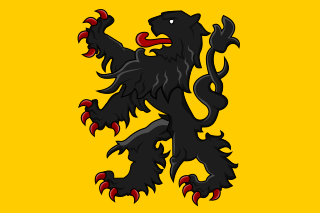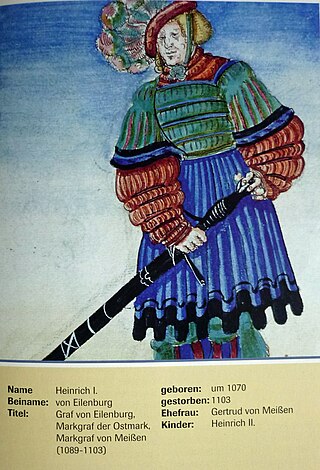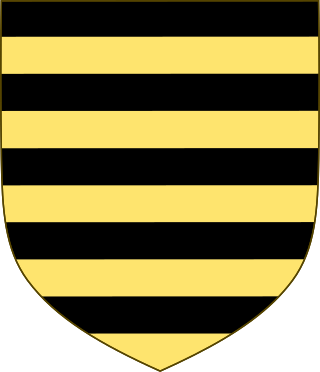Egbert is a name that derives from old Germanic words meaning "bright edge", such as that of a blade. Anglo-Saxon variant spellings include Ecgberht and Ecgbert. German variant spellings include Eckbert and Ekbert.

The Margravate or Margraviate of Meissen was a medieval principality in the area of the modern German state of Saxony. It originally was a frontier march of the Holy Roman Empire, created out of the vast Marca Geronis in 965. Under the rule of the Wettin dynasty, the margravate finally merged with the former Duchy of Saxe-Wittenberg into the Saxon Electorate by 1423.
Magnus I (1304–1369), called the Pious, was a notable German noble from the House of Welf, a powerful dynasty in medieval Germany. He was the ruler of the Principality of Brunswick-Wolfenbüttel, a part of the larger Duchy of Brunswick-Lüneburg. Magnus was a key figure in the Welf dynasty’s efforts to consolidate their territorial holdings during a time of political fragmentation in the Holy Roman Empire.
The Brunonids were a Saxon noble family in the 10th and 11th centuries, who owned property in Eastphalia and Frisia.
Gertrud of Brunswick was Countess of Katlenburg by marriage to Dietrich II, Count of Katlenburg, Margravine of Frisia by marriage to Henry, Margrave of Frisia, and Margravine of Meissen by marriage to margrave Henry I.

Richenza of Northeim was Duchess of Saxony from 1106, Queen of Germany from 1125 and Holy Roman Empress from 1133 as the wife of Lothair of Supplinburg.
Egbert II was Count of Brunswick and Margrave of Meissen. He was the eldest son of the Margrave Egbert I of the Brunonen family.
Theodoric I, called the Oppressed, was the Margrave of Meissen from 1198 until his death. He was the second son of Otto II, Margrave of Meissen and Hedwig of Brandenburg.

Henry I (1070–1103), nicknamed the Old, a member of the House of Wettin, was Count of Eilenburg as well as Margrave of the Saxon Eastern March from 1081 and Margrave of Meissen from 1089 until his death.
Henry II (1103–1123) was the Margrave of Meissen and the Saxon Ostmark from his birth until his death. He was the posthumous son of Margrave Henry I and Gertrude of Brunswick, daughter of Egbert I of Meissen. He was by inheritance also Count of Eilenburg. He was the second Meissener margrave of the House of Wettin.

Liudolf of Brunswick was Margrave of Frisia, Count of Brunswick, Count in the Derlingau and the Gudingau.
Bruno II was the count of Brunswick. He belonged to the Brunonen family. In 1038 he succeeded his father Liudolf, Margrave of Frisia. His mother was Gertrude the daughter of Count Hugo and brother of Pope Leo IX.
Henry the Fat, also known as Henry of Nordheim or Northeim, was Count in Rittigau and Eichsfeld from 1083 onwards, and was the Margrave of Frisia from 14 April 1099 until he was murdered in 1101. He was the father of Empress Richenza.
Louis of Meissen was a German nobleman from the House of Wettin. He was Bishop of Halberstadt and later Bishop of Bamberg, then Archbishop of Mainz and finally Archbishop of Magdeburg.
Immilla was a duchess consort of Swabia by marriage to Otto III, Duke of Swabia, and a margravine of Meissen by marriage to Ekbert I of Meissen. She was regent of Meissen during the minority of her son, Ekbert II.
Adela of Louvain (d.1083) was margravine of Meissen and later, margravine of the Saxon Ostmark.

Siegfried I of Ballenstedt, was the son of Adalbert II of Ballenstedt, and a member of the House of Ascania. He was count palatine of the Rhineland (r.1095/7-1113), and count of Weimar-Orlamünde (r.1112-1113).
Gertrude of Northeim, was a German noblewoman and regent.
Gertrude the Elder of Brunswick, also known as Gertrude of Egisheim, donated together with her husband Liudolf of Brunswick the collegiate church of St. Blasius in Braunschweig and founded the later so-called Welfenschatz.




